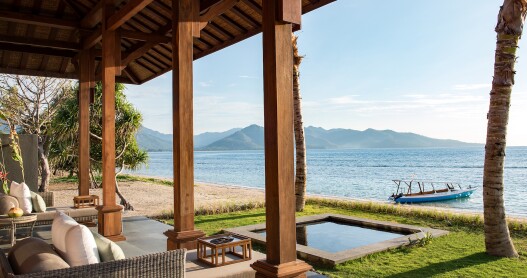Overview
When’s the best time to go to Reykjavik?
Between May and September is generally considered the best time to visit Iceland, due to better temperatures and longer days. That said, summers can be crowded, especially in Reykjavik, and many excellent festivals and cultural events, such as the Reykjavik Film Festival and Iceland Airwaves music festival, occur outside of the main tourist season. Visiting in winter, between November and February, is the best time to catch the aurora borealis.
How to get around Reykjavik
Reykjavík is well-connected to the rest of the world these days, with an impressive number of flights arriving to and from Europe and North America. The city’s main airport is at Keflavík, around 30 miles west of the capital; regular buses shuttle air passengers to and fro, providing a much cheaper service than a taxi, albeit slightly slower. By far the best way to get around the center of Reykjavik is on foot, though buses operate throughout the central and suburban districts, and taxis are also available. For exploring beyond the capital, you can easily rent a car or take a bus (either a public one or on a scheduled tour) around Route 1, the highway that circles the country, though bear in mind parts of it can close during bad weather.
Can’t miss things to do in Reykjavik
Reykjavik’s central area is small enough to tour comprehensively in a day. If it’s sunny, head straight to the city’s tallest point, the rocket-shaped Hallgrímskirkja church, whose steeple offers sweeping views across the city’s colorful rooftops and out to sea. A stroll around the Tjörnin lake to admire its abundant bird life is always pleasant, and can be combined with a visit to the adjacent Reykjavik City Hall. If you want to walk further, head to the harbor to admire the fishing boats and mountain scenery backdrop and to explore the Reykjavik Maritime Museum. Catching a classical concert or live show at concert hall Harpa is a must for any music fan—and its coruscating facade, designed by Icelandic-Danish artist Olafur Eliasson, will interest architecture buffs, too. Travelers who want to learn more about Icelandic culture shouldn’t miss the Reykjavik Art Museum or the National Museum of Iceland.
Food and drink to try in Reykjavik
Reykjavik’s restaurant scene has come on leaps and bounds over the last decade or so, with a host of eateries opening up that range from cheap and casual to hip and high-end. At Hotel Holt’s Gallery Restaurant you can try classy French cuisine in an elegant, art-filled room, and for delicious traditional fish soup head to Vid Tjörnina, which offers Icelandic classics in a scenic lakeside location. Nordic House’s Dill Restaurant, the first Icelandic restaurant to win a Michelin star, has upscale fusion dishes using ingredients like Arctic char, while more casual eats can be found at the buzzy Laundromat Cafe, Noodle Station (for Asian food), and Bæjarins Beztu Pylsur, which has been selling Icelandic hot dogs since 1939. If you are brave enough to try traditional food, keep an eye out for hákarl (shark), harðfiskur (dried fish), or slátur (blood pudding).
Culture in Reykjavik
Although home to only around 120,000 people (some 200,000 in the Capital Region), Reykjavik’s creative spirit is visible throughout the city’s wealth of world-class museums and galleries, innovative design stores, and constant slew of new (and often internationally recognised) musicians, writers, and artists. To explore the more traditional side of Iceland’s rich Viking history and heritage, the National Museum of Iceland and the Arbaer Open Air Museum are not to be missed, while architecture fans will love buildings like Hallgrímskirkja and Harpa. The city also offers a great year-round events calendar featuring international music festivals such as Airwaves and Sonar Iceland, as well as local events like Reykjavík Pride and Culture Night.
For Families
Reykjavik is a fabulous destination for families. It’s safe, clean, a breeze to navigate on foot, and Icelanders are famously family-friendly. There are all kinds of activities to enjoy, including visiting one of the local thermal pools, exploring Viking history at one of the museums, feeding the ducks at mellow Tjörnin lake, or taking a boat trip from the harbor to see whales and puffins. Most restaurants and cafes will welcome kids, and many of the city’s events are fun for the young ones: the Children’s Culture Festival in April for example, or the Festival of the Sea in June.
Local travel tips for Reykjavik
To experience a hot spring like a local, forget the municipal pools and head out to Heinabergsjökull, near Höfn (you’ll need a car). You’ll find man-made pools with stellar views of nearby Vatnajökull, Europe’s largest glacier. And while Airwaves is definitely the coolest music festival on the Icelandic calendar, for something more arty check out the Lunga Festival in Seyðisfjörður, where people gather and create art for a week and then finish up with a really fun party.
Local Resources
The Reykjavik Grapevine
Iceland Review
Inspired by Iceland
Guide Editor
Paul Sullivan is a Berlin-based writer, editor, and photographer. Covering music, travel, and culture, his words and images have appeared in a broad range of international publications such as AFAR, The Guardian, The Sunday Times, The Telegraph, BBC Travel, and many more. He has also written, photographed, and contributed to around twenty books, including travel guides for Wallpaper, Rough Guides, DK, Fodors, and several books on music and culture. He is also the founder and editor of Slow Travel Berlin.







